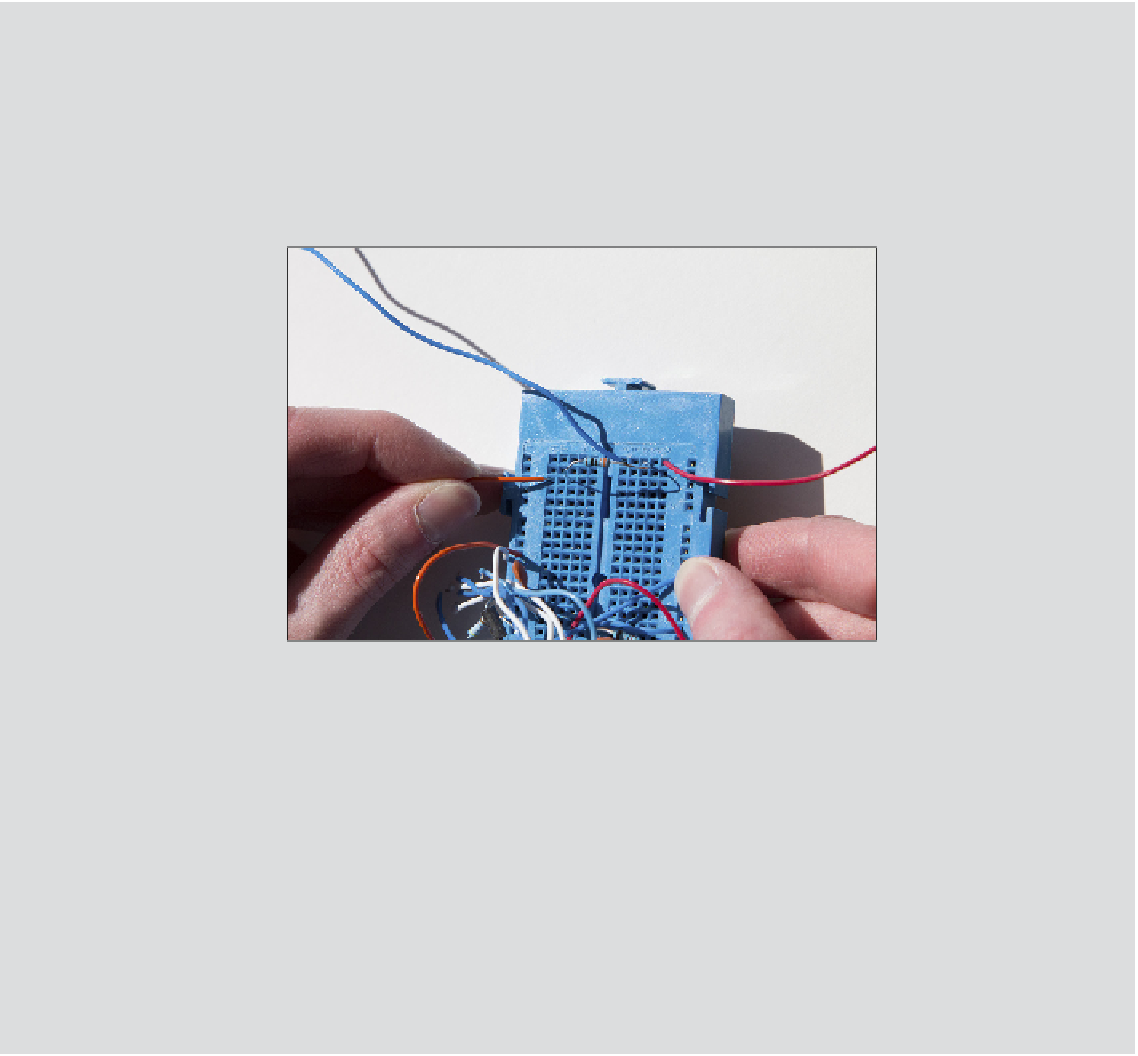Hardware Reference
In-Depth Information
continued
❍
Breadboard, sometimes called
binboard
(see Figure 1-11) - is great for experi-
menting. Breadboard has rows of strips of metal that grip and connect wires.
Components can be inserted directly into the breadboard, which makes it good for
prototyping circuits. Wires are only loosely gripped so they can be pulled out -
good for reuse, but not very secure or permanent. Some cheaper breadboards
suffer from poor connectors.
Figure 1-11:
Using a
breadboard.
❍
Solder (shown in Figure 1-12) - this is the most permanent way of making con-
nections.
Solder
is a mixture of metals and is heated with a soldering iron until
it melts and joins the connectors together. It's also possible to re-melt solder to
separate connectors, although this is not always easy without damaging the
components. Solder will also only join certain types of metals - for example, it
won't stick to aluminium. Soldering can be a bit tricky at first; it takes a bit of
practise to apply just the right amount of heat in the right place to avoid melting
insulation, damaging sensitive components or burning your fingers! It's best to
practise to join some scrap components and wire as your first few attempts will
be unsuccessful.
It's best to become familiar with all methods of making connections; then you can use
whichever method is most appropriate at the time. And, if nothing else, learning how to
solder with molten metal can be fun!

